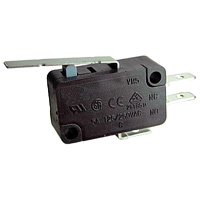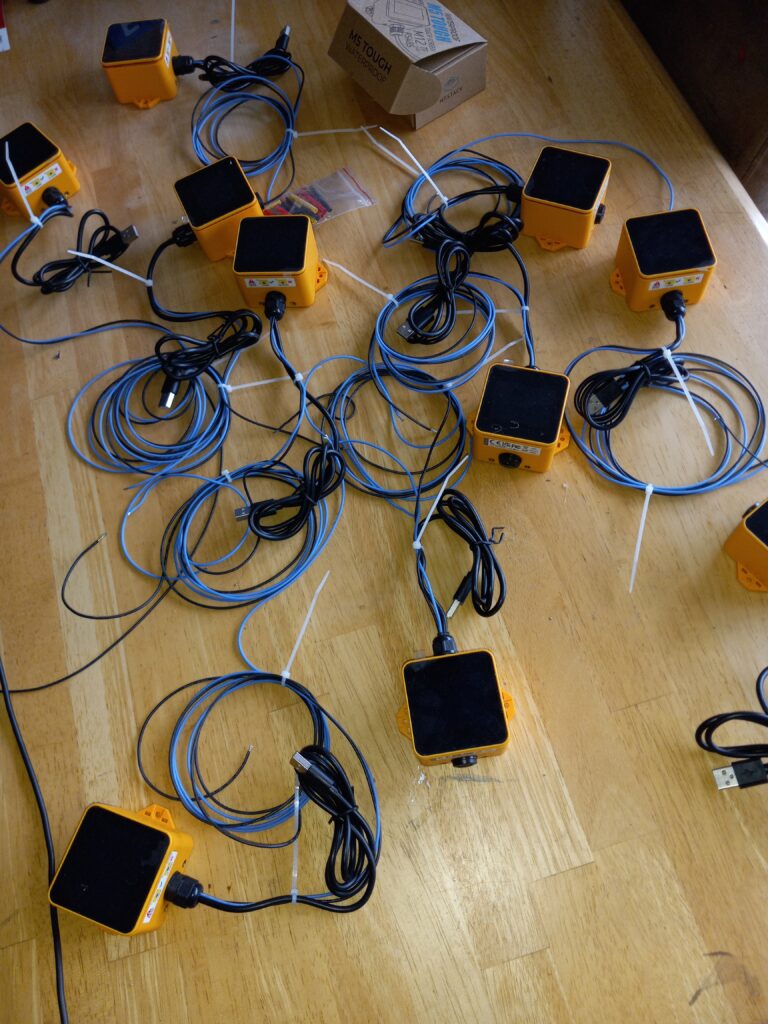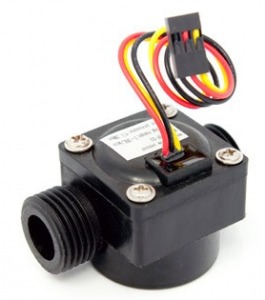In order to count anything, we need to detect it first. This usually means some kind of sensor. The sensor used will typically provide a signal that our counter can read. Most such sensors actually function as a type of switch because their output terminals are closing a circuit on the counter electronics that causes a count to increment.
The simplest sensor used to count objects is an actual physical switch. Microswitches are switches with very sensitive contacts: a light touch is all it takes to register the presence of an object. Often microswitches are made with levers to reduce the force needed or to have a greater reach.

One common application for this type of switch is in coin counters for arcade games. The coin falls through a slot, tripping the lever as it rolls past the switch. The main advantage of microswitches is their low cost and reliability. A disadvantage of this type of counting sensor is that physical contact with the switch is required and the force required to trip the sensor can affect the object you’re counting.
Another common sensor type used as input to counters or object detectors is a photoelectric switch. This optical sensor detects the interruption of a beam of light, often invisible infrared light. For example, to count boxes on a conveyor belt, an emitter, typically an infrared LED shines a focused beam of light across the belt. When the beam is reflected by an object passing by on the belt, the detector sees the returned light and closes a circuit and this sends a pulse to the counter module, updating the count of items going by.

Optical sensors have the advantage of not requiring contact with the switch, but may not work well in dirty or dusty environments where the optical signal may be blocked. Also, this type of sensor used for counting reflective items can be “fooled” by multiple reflections, causing an inaccurate count. In this case, a through-beam sensor, where the item must pass between the LED emitter and its detector, is often more reliable.
Magnetic sensors, as their name claims, detect magnetic fields. They are very useful when a non-contact sensor is needed in a dirty environment where light may be blocked.
Now that we’ve got sensors to detect the items, our PRT232 counter module is the ideal interface to do the actual counting. We can make modifications to the basic counter, such as a display, or special RS232 signal outputs,
If you'd like to subscribe to this blog, please click here.



